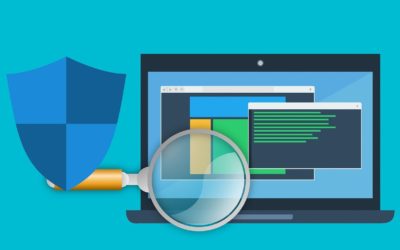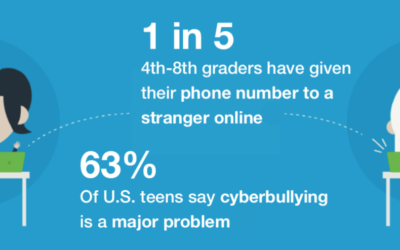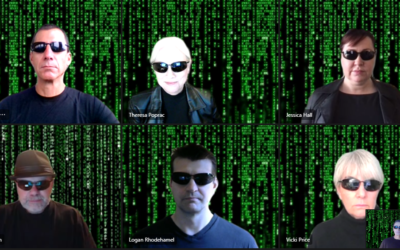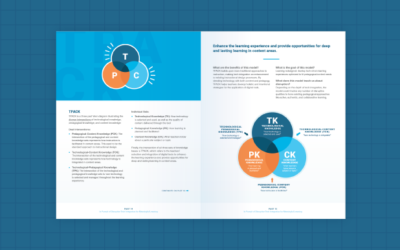Computational thinking has become important to teaching problem solving in education because it empowers students with processes to develop strategic solutions to complex problems, essentially “leveling up” their skills, or creating algorithms that can make future processes more effective. This enables students to take on more complex challenges and prepare for real-world applications.
Decomposition in Computational Thinking
While the process of computational thinking is multifaceted, there is one key to computational thinking that is essential for success: decomposition. Decomposition is the process of breaking a complex task or problem into smaller, more manageable pieces. From this decomposition, students can eliminate unnecessary information, identify patterns and begin the process of identifying which parts of the problem are most important, how to solve or complete each step, and how those parts can be put together for a clear and unified step-by-step solution.
Why is the Decomposition Technique Required in Computational Thinking?
The technique of decomposition is required in computational thinking because it breaks complex tasks into subtasks while developing a sequentially-based understanding of the problem. This allows unnecessary information to be discarded, patterns to be identified, relevant information to be extracted and the process of step-by-step resolution to be defined for a more effective problem-solving process.
By definition, computational thinking is the process of tackling complex problems and finding a clear, step-by-step solution that can be replicated. Decomposition, therefore, is essential to this process as it includes breaking a task into several sub-tasks, helping to align the task to a step-by-step solution.
Another reason decomposition in computational thinking is important is because it allows each subtask to be examined more closely. This not only helps to categorize information as essential or non-essential, but also empowers the problem-solver with a better ability to analyze each specific part of the task or challenge to more effectively develop a reasonable solution.
Examples of Decomposition in Computational Thinking
Below are some real-world examples of utilizing decomposition in computational thinking:
- You have to clean your house. Instead of facing the task as a whole, you practice decomposition by breaking the task into a to-do list with multiple subtasks.
- To build shelves for a storage space, you practice decomposition by measuring the space, creating a blueprint or plan to determine the size of the shelves and the materials you need to accomplish the task. Next, you purchase the supplies and cut the lumber to size, then install one wall of shelves at a time.
- In science, to prove or disprove a hypothesis, you practice decomposition by creating subtasks including background research, observation, generating a hypothesis, determining which variables to test, performing experiments and drawing a conclusion.
Final Thoughts
Consider how often computational thinking appears in your everyday life. Do you naturally use decomposition and computational thinking to resolve a challenge? For more information about computational thinking and how they apply to students, explore some of our most recent articles:
Why We Must Close the Digital Divide
The term digital divide was first used in the mid-1990s, to describe the gap between those who have access to computers and the internet and those who do not. And even today, the Oxford Dictionary defines the digital divide as “the gulf between those who have ready...
New Product Releases in Learning.com
We are always listening to our customers and taking their feedback and suggestions to make continuous improvements to Learning.com’s products. Recently, we implemented a number of new product releases in EasyTech, including updated content and enhancements to our...
Learning.com Takes Security Seriously: Here’s Proof
Learning.com has just achieved a SOC 2 type 2 compliance for the second year in a row. This rigorous audit of our security controls and processes to ensure that we are taking the necessary steps to protect our customers’ data.
Looking to 2022: What’s Ahead in EdTech
January is always a great time to look ahead at our expectations for the coming year. I believe that 2022 will, while continuing to suffer effects of the pandemic, provide some exciting developments across the K-12 and edtech markets. Pandemic – We’re Not out of the...
Benefits of Applied Learning in K-12 Technology Curriculum
“Applied Learning” has become a buzzword in education, considered a tool to address issues such as student dropout rates, test scores and engagement. In this article, we discuss applied learning specifically in a technology curriculum setting and how it benefits K-12...
Ensure Online Student Safety and CIPA Compliance for E-Rate
Kids are online all the time — whether it’s a smartphone or laptop computer. But they’re not always under close supervision. Schools and parents alike have a vested interest in ensuring that students know how to navigate the internet in a safe and responsible way. As...
2021: The Digital Learning Year in Review
2021 was a year of continued challenges for the K-12 industry—but also growing hope and optimism for the future. The numerous challenges of 2020 receded but were not completely addressed or resolved. By the middle of the 2020-21 school year, districts around the...
The Importance of Keyboarding for Students
Most K-12 schools are providing keyboarding for students, but why is this skill so important? In the following article, we discuss the importance of keyboarding and how it supports students not only in education, but also in future careers. Importance of Keyboarding...
Thanksgiving: Thankful for our Team
Thanksgiving is one of my favorite times of the year. The Thanksgiving holiday is always a great celebration with the “4 F’s” — Family, Friends, Food, and Football. For years we’ve had a long tradition of a Turkey Bowl—played in the mud on a field in Seattle with a...
DALI Superintendents Summit: Intentionality in Tech
Last week, I had the opportunity to attend and present at the District Administration Leadership Institute’s Superintendents Summit hosted in Tucson. This was my first DALI presentation, so I was really looking forward to the event, and I was not disappointed. I was...
Disruptive Tech Integration for Meaningful Learning
When Learning.com first published “In Pursuit of Disruptive Tech Integration for Meaningful Learning” in 2019, none of us had any inkling of the enormous disruption lurking just around the corner. While the COVID-19 pandemic was certainly not an edtech innovation, it...
5 Qualities to Look for in Keyboarding Programs for Students
Keyboarding has become a crucial skill for students. It is used regularly for the completion of school assignments, recreation and will eventually be required for job hunting and careers. Being able to type effectively and efficiently will help the student to be more...

Learning.com Team
Staff Writers
Founded in 1999, Learning.com provides educators with solutions to prepare their students with critical digital skills. Our web-based curriculum for grades K-12 engages students as they learn keyboarding, online safety, applied productivity tools, computational thinking, coding and more.













